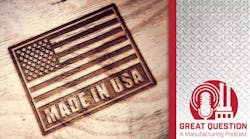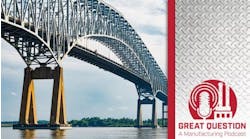However, the industrial IT world, upon which the industrial Internet of things (IIoT) must be build, is not nearly so far along in its embrace of standards. Indeed, a recent ReadWrite article, noted that the absence of standards is one of the key things holding back IIoT adoption. For instance, the author asserts that some 400 different standards apply in the industrial realm, “which is tantamount to there being no standards at all.”
The solution, according to the author, is twofold. Sensor and industrial automation suppliers must adopt common standards and, perhaps just as important, the author offers the somewhat heretical thought that manufacturers need to be persuaded to not simply “hoard” data but instead to allow or encourage data services to arise using that data.
A similar take on the subject comes from Gordon Haff, a long-time tech analyst and now a “cloud evangelist” at open source pioneer Red Hat. His lengthy blog post, discusses some of the technical reasons why open source resources are needed to make the most of IIoT. He also argues that the more collaborative approach to doing business (and sharing information in general) that open source encourages, could be a very good thing.
And, he notes, “Most of today’s big IT trends are fundamentally enabled by open source code. The web giants wouldn't exist without Linux and other open source software. The innovations happening in data storage and analytics infrastructures are essentially all happening in open source communities.”
Another organization exploring the open source opportunities for IIoT is The Digital Manufacturing and Design Innovation Institute (DMDII), a project of UI LABS (a Chicago-based research and commercialization collaborative of universities and industries).
Over the summer DMDII announced the launch of its open source software project, the Digital Manufacturing Commons (DMC) – which is a software platform that can be used to share and access manufacturing data and analysis tools. DMDII says the project has the potential to generate millions of dollars of savings for small, medium and large manufacturers “by democratizing the flow of innovative digital manufacturing data.”
What does that mean? Well, DMC is a work in progress and really just getting down to brass tacks with an open workshop on September 23 to introduce participants to the technology and roll out the all-important DMC software development kit (SDK). With luck, that process will spark some significant innovations among entrepreneurs, individuals, researchers and corporate players. DMDII itself plans to fund about 20 project teams to develop open source software applications beginning in January 2016.
One of the movers and shakers in all this, William King, CTO of DMDII, will be delivering a talk, “The Digital Manufacturing Commons: An Open Source Vision,” at SmartIndustry 2015 in October.
And, in a press release, Stephan Biller, Chief Manufacturing Scientist at GE Global Research, which supports the project, noted, “The construction of a digital thread will allow all facets of the manufacturing supply chain to move faster and achieve new levels of productivity previously not possible.”
Alan R. Earls is a Boston-based writer focused on technology, business, and manufacturing — a field where he spent the earliest part of his career. He has written for publications and websites as diverse as The Boston Globe, Computerworld and Modern Infrastructure as well as Industry, The Manufacturer, and Today's Machining World and is a regular contributor to the Smart Industry Connect blog.



